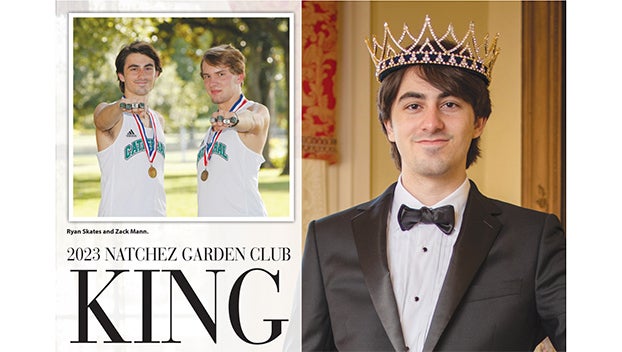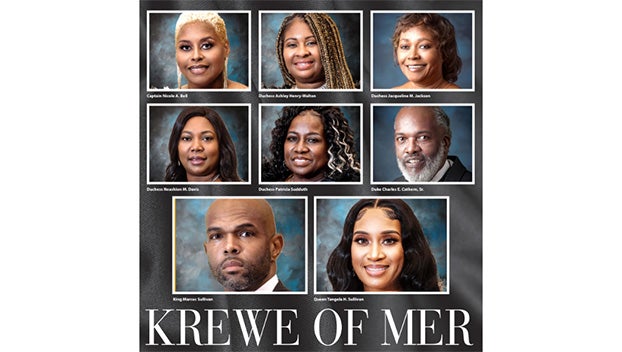July isn’t too late for bedding
Published 12:16 am Sunday, July 10, 2011
If you want to boost the color in your landscape, nurseries still have a good selection of colorful bedding plants that will thrive in whatever heat the summer throws at them. They come in a variety of heights, textures and colors and are adapted to grow in everything from moist, shady areas to hot, dry, sunny locations.
Here are a few suggestions for some excellent summer bedding plants. But there are lots more. You may be surprised at the selection area nurseries have and how well these plants will do in our torrid summer weather.
Angelonia
Angelonia (Angelonia angustifolia) is a plant that’s still rather new to gardeners. This delightful, heat-tolerant plant is fairly tall and shrubby, perfect for the middle or back of flowerbeds. Flower production is nearly continuous, and the blooms come in shades of purple, lavender, white, pink and rose. The Serena angelonia series is a Louisiana Super Plants selection and is especially recommended.
Blue daze
Blue daze (Evolvulus glomeratus) is a low-growing, shrubby bedding plant that loves summer heat and sun. Neither insects nor diseases bother this plant, whose grayish foliage and clear, blue flowers add a cool note to the garden.
Wishbone flower
A versatile and very reliable plant that does well in full sun to part shade is the wishbone flower (Torenia fournieri). This virtually foolproof annual plant provides a tremendous display of blue, purple, lavender, rose, pink or white flowers over a long period. Also outstanding is the low-growing Summer Wave series, which is exceptionally vigorous and long-blooming.
Lantana
The common lantana or ham and eggs (Lantana camara) has been refined into a number of garden varieties that are among the best plants for summer color. Few plants combine constant flowering, heat tolerance and ease of care as well as lantana does. Don’t forget there are dwarf forms that stay under 2 feet and taller types that get 3 feet tall or more. Know what you are buying.
Pentas
Pentas stay in constant bloom all summer and into fall, with flowers in shades of white, pink, rose, lavender and red. Dwarf varieties, such as the Louisiana Super Plants selection Butterfly series, stay less than 2 feet tall, and taller varieties grow to 3 feet tall. They are absolutely care-free other than trimming or pinching back occasionally, if desired. And they are simply irresistible to butterflies.
Narrow-leaf zinnia
The narrow-leaf zinnia (Zinnia linearis) is usually a brilliant, in-your-face orange, but it also comes in yellow and creamy white, and loves hot, sunny, dry areas. It is low-growing and constantly covered with flowers, and looks particularly nice cascading over the edge of raised planters. Also look for the new Profusion series zinnias and Zahara series zinnias, which come in several colors. They produce larger flowers on more compact plants, but they’re just as tough and long-blooming.
Bedding plants for shade
A shady area is no excuse not to have summer color. I, for one, would rather work in a shady bed when it’s hot anyway. Coleus, polka-dot plant and caladiums provide bright splashes of color with their variegated foliage. Wax begonia, torenia and impatiens provide the most reliable flower color in partly shaded conditions.
Don’t let the heat of July and August do your garden in. Choose your plants carefully, and watch your garden thrive despite the weather.
Here’s a list of heat-tolerant plants for colorful summer flowerbeds:
Low-growing (less than 2 feet)
Mexican heather, ornamental peppers, coleus, impatiens, periwinkle, dwarf cosmos, wax begonia, dwarf pentas, dwarf globe amaranth, ageratum, salvia Victoria, marigold, portulaca, blue daze, perennial verbena, purslane, dusty miller, rudbeckia, abelmoschus, narrow-leaf zinnia, Profusion zinnia, wishbone flower (torenia), Dahlberg daisy, caladium, balsam, gaillardia, celosia, lantana, scaevola, dwarf melampodium.
Taller-growing (over 2 feet)
Butterfly weed, angelonia, shrimp plant, cleome, coleus, melampodium, four o’clock, cosmos, hardy hibiscus (mallow), sunflower, salvias, cigar plant, Mexican sunflower (tithonia).
Dan Gill is a LSU AgCenter horticulturist.





